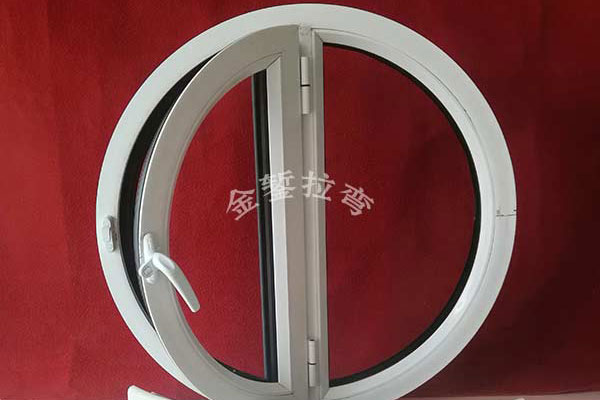Redefining the construction industry with innovative solutions, cuttin-edge technology and sustainable practices
Profile Bending 2025-06-18
The manufacturing industry is a critical pillar of China's economy, contributing significantly to its GDP and employment. Among the myriad of techniques that underpin this vast sector, metal bending stands out as a fundamental process that shapes materials into functional parts used across various applications. As the demand for precision and efficiency grows, Chinese metal bending techniques are evolving, driven by technological innovations and market trends.
Metal bending is a manufacturing process that involves deforming metal sheets or bars into desired shapes without breaking or cracking the material. This process is essential for creating components used in diverse industries, including automotive, aerospace, construction, and electronics. The ability to bend metal accurately and efficiently is crucial for producing high-quality products that meet stringent industry standards.
Current Trends in Chinese Metal Bending
1.Increased Automation and Robotics
Automation has become a significant trend in the Chinese manufacturing landscape. The integration of robotics in metal bending allows for higher precision, consistency, and speed in production. Automated bending machines equipped with advanced software can execute complex bending operations, reducing human error and increasing throughput. This trend is particularly beneficial in high-volume production environments where efficiency is paramount.
2.Adoption of Advanced Materials
The shift toward lightweight and high-strength materials, such as aluminum and advanced alloys, is reshaping metal bending practices in China. These materials require specialized bending techniques to prevent deformation and ensure structural integrity. Manufacturers are investing in research and development to create bending solutions that can handle these advanced materials, ultimately enhancing product performance and durability.
3.Focus on Customization
With the rise of consumer demand for personalized products, customization has become a focal point in manufacturing. Chinese metal bending companies are adapting to this trend by offering bespoke bending solutions tailored to specific client requirements. This flexibility enables manufacturers to produce unique components that cater to niche markets, enhancing their competitive advantage.
4.Integration of Industry 4.0
The concept of Industry 4.0, which emphasizes the use of smart technologies and interconnected systems, is gaining momentum in the Chinese manufacturing sector. Metal bending operations are increasingly leveraging IoT (Internet of Things) devices, big data analytics, and cloud computing to optimize processes. Real-time monitoring of production lines allows for immediate adjustments, predictive maintenance, and data-driven decision-making, leading to improved efficiency and reduced downtime.
5.Sustainability and Environmental Consciousness
As global awareness of environmental issues grows, the manufacturing industry is under pressure to adopt sustainable practices. Chinese metal bending companies are responding by implementing eco-friendly processes, such as reducing waste and energy consumption. Innovations such as using energy-efficient machines and recycling scrap metal are becoming standard practices, contributing to a greener manufacturing landscape.

Innovations in Metal Bending Technology
1.Advanced Bending Machines
The development of state-of-the-art bending machines equipped with CNC (Computer Numerical Control) technology has revolutionized metal bending in China. These machines allow for precise control over the bending process, enabling manufacturers to produce intricate designs with minimal human intervention. The accuracy and repeatability of CNC bending machines facilitate the production of high-quality components that meet strict tolerances.
2.3D Bending Technology
3D bending technology is an emerging innovation that allows for the creation of complex, three-dimensional shapes. This technology expands the possibilities for design and functionality in metal components. Manufacturers are increasingly adopting 3D bending to produce innovative designs that were previously difficult or impossible to achieve with traditional bending methods.
3.Hybrid Manufacturing Techniques
The integration of metal bending with other manufacturing processes, such as additive manufacturing (3D printing), is gaining traction. Hybrid techniques allow manufacturers to create components that combine the strengths of both processes. For example, 3D printing can be used to produce complex geometries, while metal bending can provide the structural integrity needed for functional parts.
4.Simulation Software
Advanced simulation software is being utilized to model the metal bending process before actual production. This technology helps engineers predict how materials will behave during bending, allowing for optimization of the design and reducing the risk of errors. By simulating different scenarios, manufacturers can refine their processes and enhance overall efficiency.
Chinese metal bending plays a vital role in the manufacturing industry, serving as a foundational process for producing a wide array of components. As the industry evolves, trends such as automation, customization, and sustainability are driving innovations that enhance efficiency and meet the demands of modern production. With advancements in technology and a commitment to quality, Chinese metal bending is not only adapting to current market needs but also paving the way for a more innovative and sustainable future in manufacturing. The ongoing development in this field promises to reinforce China's position as a global leader in manufacturing excellence.